Saving the Environment through Alternative Livelihoods (SEAL Project) Establishment of a Learning Center for the Demonstration and Propagation of Dragon Fruit Farming in Gulu – Northern Uganda.
Northlight Green Services (NGS) in partnership and Hanns Siedel Foundation – Kenya, through funding from The Global Project on Mitigation and Adaptation to Climate Change (GMACC), established a learning site of dragon fruit farming and cultivar multiplication, integrated with other creative Climate Smart Practices including permaculture, resilience design among others. This is aimed at promoting more sustainable alternative livelihoods among small-holder households and learning institutions as substitutes for commercial brick-laying, charcoal burning, and other exploitative land use practices for food, nutrition, and income security while preserving ecosystem health and land productivity. The center will provide hands-on training for charcoal traders, youth, women, and learning institutions on the propagation and growing of fruit trees which will be integrated with soil and water conservation technologies and permaculture for maximum benefits.
NGS envisions the progressive effectiveness of the learning center in contributing towards community transformation through awareness, skills transfer, and dissemination of planting materials in aid of replication. The learning site will be the first of its kind in the Acholi-sub-region which is generally a hot region, and therefore very suitable for dragon fruit farming. Research shows that dragon fruit trees require at least eight hours of direct sunlight to thrive and yield sweet fruits. The trees require little water and minimal care making it quite ideal for a pilot project.

After the first fruiting season, which is projected to be from the start from June 2025, the learning site will be able to generate at least 12,000 cuttings per year. The future of this project is to establish learning sites within the local public schools through a project to be named ‘’School Greening Project’’.
NGS also aims to facilitate extensive training and mentoring which will help local farmers to better understand the socio-economic benefits of the dragon fruit farming value chain. This will diversify their avenues of generating income and improve their purchasing power and ability to meet basic human needs, hence lessening their over-dependence on natural resources like trees for survival. This in return will create space for preservation and regeneration of indigenous species that are better adapted to the local climatic conditions.
For the initial investment, NGS concentrated on planting 120 units of dragon fruits which have been planted against concrete poles to support their vertical growth and to effectively withstand the weight of this perennial crop in the longer term. Preceding the actual transplanting executed in the form of a practical demonstration session, a significant amount of time, finances, and energy went into preparing the learning site. This involved the following key steps;
Site assessment and demarcation
The learning site is situated within NGS’s office premises bearing different forms of land use practices and with sections disfigured prior- to acquisition by the original owners for bricklaying. It was necessary to position the dragon fruits in a section of the open space away from barriers to attain optimal plant population at a relatively uniform spacing of 2 meters by 3 meters as recommended by the supplier of cuttings who also conducted the practical training session.
Linning and excavation
Raw planting ensures optimal plant population, fairly uniform access to nutrients, sunlight, water, and ease of maintenance of the plants as well as orderliness. These were achieved through lining during which, points of excavation to install the poles were marked at even spacing of 2 meters between the rows and 3 meters between the plants. This paved the way for the excavation of pits measuring 2 feet deep by 2 feet wide, commensurate to the weight of the concrete poles.
Procurement and installation of concrete poles
Each concrete pole installed in NGS’s learning site was custom-made with a uniform thickness of 10 cm, bearing 02 pairs of iron bars of varying lengths to reinforce the concrete. 02 pairs of iron bars run through the length of 9 meters to the base while 02 run for half a meter into the concrete and all 04 pieces of iron bars protrude out of the concrete for 30cm at the top to support motorcycle tyres which are yet to be installed. This choice of material, despite the costs involved, will ensure durability and cost efficiency in the long run. The concrete poles were installed about 2 feet deep in a mixture of aggregate, sand, and cement in such a way that they are firm enough to withhold the weight of the plants and fruits. An experienced mason was hired to facilitate the installation under the close supervision of the project manager with the help of casuals who delivered the poles closer to the pits, aggregate, cement, and sand mixture and supported them during installation. The pits were backfilled with part of the sub-soil excavated from beneath to firm the poles and level the field.
Pitting and preparation of planting beds
Upon installation of the poles, another phase of excavation ensued to loosen the hardpan around the poles and create heaps of fertile soil of uniform depth for transplanting the cuttings. The heaps were meant to provide the medium of root development with ample nutrients and allow drainage of excess water in case of heavy rains. The heaps were later curved inwards into crater-like basins to trap excess water to feed the plant roots.
Transplanting of dragon fruit cuttings
The transplanting of cuttings was led by the supplier. He also conducted practical training on how NGS should manage the established site for maximum productivity.
In the years to come, NGS activities will be focused on capacity building. This will target the most vulnerable within the community who are also the most impacted by the effects of climate change. Climate change resilience practices will be demonstrated to enhance the adoption of Climate -Smart Agricultural Practices.
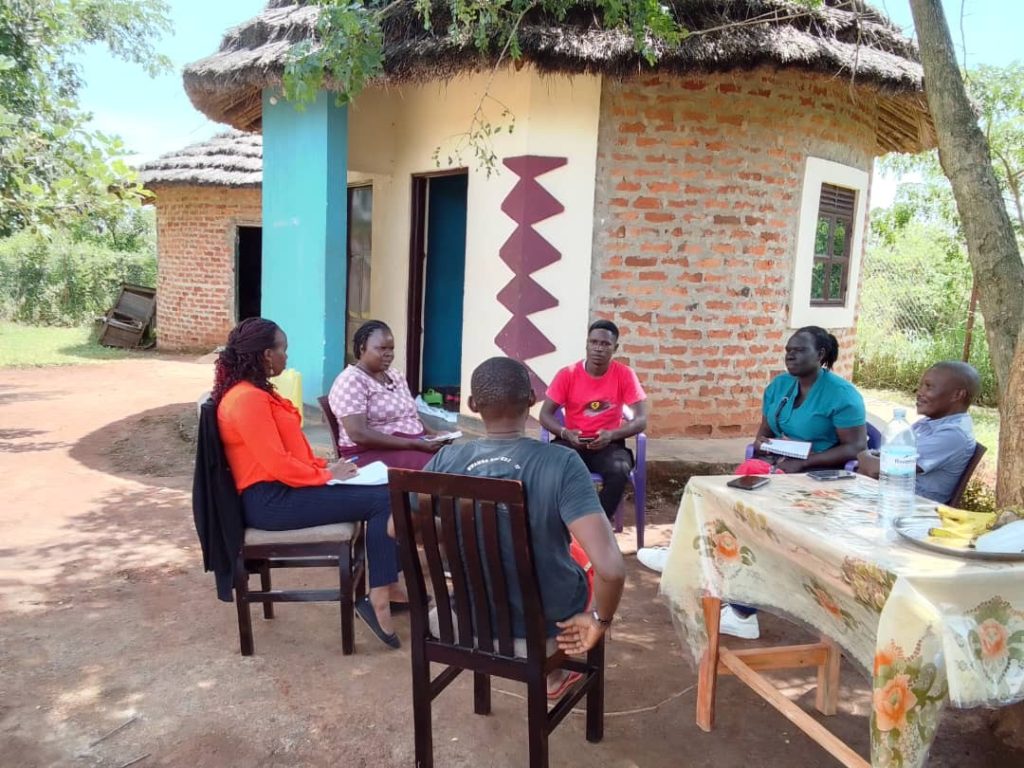



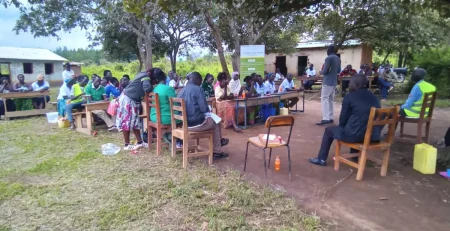
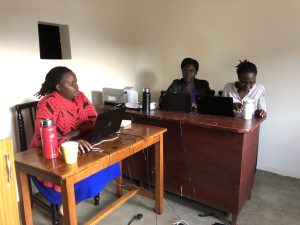
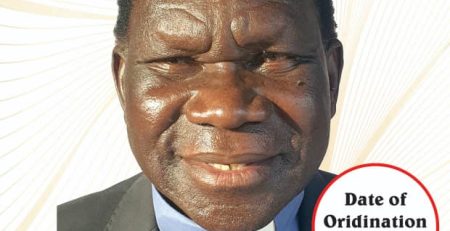
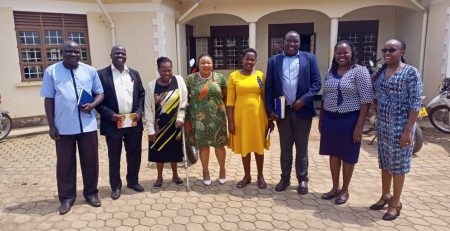
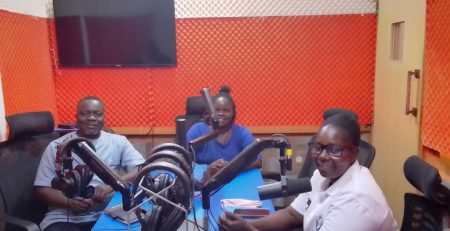
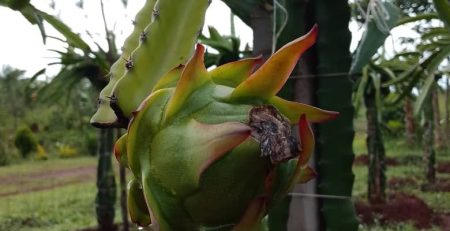
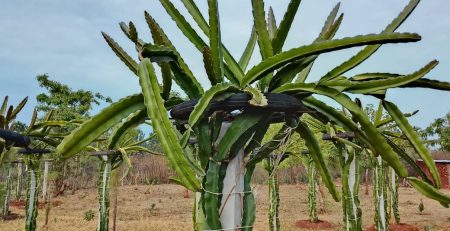
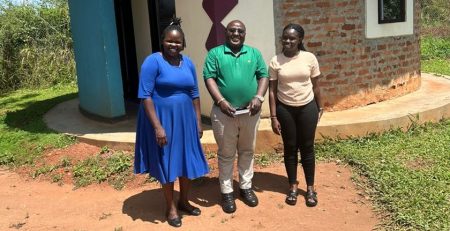
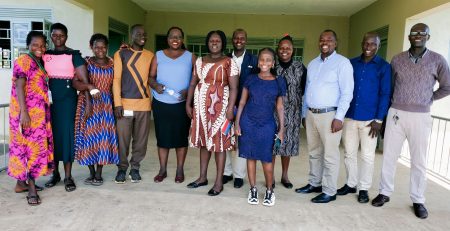

Leave a Reply